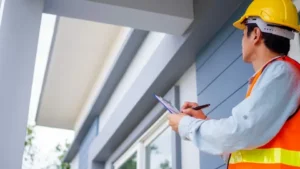Windstorms are natural phenomena that can cause significant damage to properties, leading to financial losses and safety concerns for homeowners. In regions prone to such events, mitigating the risks associated with windstorm damage becomes paramount. This article explores the concept of windstorm mitigation inspections and their role in safeguarding properties against the destructive forces of windstorms.
Understanding Windstorm Damage
What Causes Windstorm Damage?
Windstorm damage can occur due to various factors, including high winds, flying debris, and pressure differentials. Factors such as building design, location, and construction materials also influence the extent of damage.
Types of Windstorm Damage
Windstorms can cause a range of damages, including roof damage, structural instability, broken windows, and water intrusion. Understanding the different types of damage is crucial for implementing effective mitigation measures.
Importance of Windstorm Mitigation Inspections
Windstorm mitigation inspections play a vital role in assessing the vulnerability of properties to wind-related hazards. By identifying potential weaknesses and recommending mitigation measures, these inspections help homeowners minimize risks and protect their investments.
What is a Windstorm Mitigation Inspection?
A windstorm mitigation inspection is a thorough assessment of a property’s structural integrity and its ability to withstand windstorm events. Conducted by qualified inspectors, these inspections aim to identify vulnerabilities and recommend improvements to enhance the property’s resilience.
Purpose and Objectives
The primary purpose of a windstorm mitigation inspection is to evaluate the effectiveness of existing wind-resistant features and identify areas for improvement. By assessing various components of the property, inspectors can provide valuable insights into its overall resilience against windstorms.
Components Covered in the Inspection
Windstorm mitigation inspections typically cover aspects such as roof condition, building envelope, doors and windows, garage doors, and the presence of mitigation features like storm shutters and roof straps.
Benefits of Windstorm Mitigation Inspections
Undergoing a windstorm mitigation inspection offers numerous benefits for homeowners. These include:
- Enhanced safety and security for occupants
- Reduced risk of property damage and financial losses
- Potential eligibility for insurance discounts and incentives
- Increased resale value and marketability of the property
Costs and Savings Associated with Windstorm Mitigation Inspections
While there may be some upfront costs associated with conducting a windstorm mitigation inspection, the potential savings outweigh the expenses in the long run. By investing in mitigation measures recommended during the inspection, homeowners can significantly reduce the risk of costly repairs and insurance claims.
How to Prepare for a Windstorm Mitigation Inspection
Preparing for a windstorm mitigation inspection involves several steps to ensure a thorough assessment of the property’s wind resistance capabilities.
Pre-Inspection Checklist
- Secure loose items and debris around the property
- Provide clear access to all areas to be inspected
- Gather relevant documents, including building permits and insurance records
What to Expect During the Inspection
During the inspection, the inspector will assess various aspects of the property, including the roof, exterior walls, doors, and windows. Homeowners should be prepared to answer questions about the property’s construction and maintenance history.
Choosing a Qualified Inspector
Selecting a qualified and experienced inspector is crucial for obtaining accurate and reliable assessment results. Homeowners should research potential inspectors, verify their credentials, and inquire about their experience with windstorm mitigation inspections.
Common Findings in Windstorm Mitigation Inspections
Some common findings during windstorm mitigation inspections include:
- Missing or damaged roof shingles
- Inadequate roof-to-wall connections
- Weak garage doors
- Improperly installed windows and doors
- Lack of storm-resistant features such as shutters and straps
Mitigation Strategies and Recommendations
Based on the findings of the inspection, inspectors may recommend various mitigation strategies to improve the property’s wind resistance. These may include reinforcing roof structures, installing impact-resistant windows and doors, and securing garage doors with bracing systems.
Insurance Discounts and Incentives
Many insurance companies offer discounts and incentives to homeowners who invest in windstorm mitigation measures. By implementing recommended improvements, homeowners can potentially qualify for reduced insurance premiums and additional coverage options.
Myths and Misconceptions About Windstorm Mitigation Inspections
Despite their benefits, windstorm mitigation inspections are often subject to myths and misconceptions. Common misconceptions include:
- Windstorm mitigation is only necessary for properties located in high-risk areas.
- Windstorm mitigation measures are prohibitively expensive and not worth the investment.
- Insurance discounts offered for mitigation measures are minimal and insignificant.
The Future of Windstorm Mitigation
As climate change continues to influence weather patterns, the importance of windstorm mitigation will likely increase. Advances in building technologies and increased awareness of the benefits of mitigation measures will drive further adoption and implementation of wind-resistant building practices.
Conclusion
Windstorm mitigation inspections are essential tools for protecting properties against the destructive forces of windstorms. By identifying vulnerabilities and recommending mitigation measures, these inspections help homeowners enhance the resilience of their properties, reduce risks, and save on insurance costs. Investing in windstorm mitigation is not only a proactive step towards safeguarding one’s investment but also contributes to community resilience and disaster preparedness.
FAQs on Windstorm Mitigation Inspections
- Are windstorm mitigation inspections necessary for all properties?
- Windstorm mitigation inspections are recommended for properties located in regions prone to windstorms. However, even properties in low-risk areas can benefit from these inspections to identify potential vulnerabilities.
- How long does a windstorm mitigation inspection take?
- The duration of a windstorm mitigation inspection varies depending on the size and complexity of the property. On average, inspections may take anywhere from one to three hours to complete.
- Will investing in windstorm mitigation measures increase my property’s value?
- Yes, implementing windstorm mitigation measures can increase the resale value and marketability of your property. Buyers are often willing to pay more for homes with enhanced safety and resilience features.
